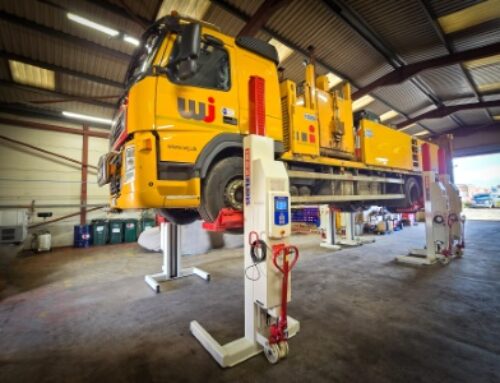Driven to distraction
Steve Green, director at independent insurance broker Anthony Jones , offers his take on how hauliers can reduce health and safety risk
, offers his take on how hauliers can reduce health and safety risk
There are a multitude of legislative, financial and social factors impacting vehicle operators’ costs generally. Premium reductions in some cases, or at least stability in charges, are being wiped out by poor loss ratios.
In an environment where we can think about all sorts of safety features such as autonomous emergency braking (AEB), forward-facing cameras, telematics, safety cages, park lane/assist to name but a few, it is with some difficulty that we have to come to terms with rising losses in the commercial motor market.
Insurers need increased levels of financial capacity as the cost of personal injury claims is on the rise (due to changes in the Ogden rate); and to cap it all, we have a government happy to impose an insurance premium tax (IPT) at 12 per cent. Why the transport sector has been so silent on this issue still bewilders this writer.
How can we explain poor claims experience in the sector? It could be something to do with the fact that 90 per cent of all accidents are down to driver error and the roads are busy.
Drivers are becoming increasingly distracted, and some practices have become so deeply ingrained that no amount of threats or logic are deterring dangerous behaviour. The use of mobile phones whilst driving is a case in point.
There is increasing focus on legislation and prosecutions following serious or fatal road traffic collisions. Arguably, the most dangerous piece of machinery built by man is a box with at least four wheels at each corner.
 Think carefully about the attention your business pays to train people how to drive heavy vehicles safely. As an employer, understanding the legislative and practical implications of dealing with the consequences is imperative.
Think carefully about the attention your business pays to train people how to drive heavy vehicles safely. As an employer, understanding the legislative and practical implications of dealing with the consequences is imperative.
Substantial increases in the level of fines imposed by the courts for health and safety offences and corporate manslaughter for businesses are being seen, together with an increased likelihood of jail time for individual offenders.
It is likely that we will see increases in prosecution and defence costs. The stakes are higher. In addition, companies need to really understand the true cost of a regulatory investigation into a workplace accident.
The financial implications of a serious workplace accident are eye-watering. The courts will assess culpability, the failure to meet standards, across four categories from very high to low. They will then assess harm, again across four categories.
The new sentencing guidelines raise the prospect of multi-million pound fines for larger organisations. For an organisation turning over £50m or more, a serious health and safety offence has a starting point of a £4m fine increased to £10m.
Corporate manslaughter offences will attract significantly higher penalties, such as £20m. The courts may also find it necessary to go beyond the guidelines where an organisation turnover greatly exceeds £50m.
In this context, all directors should take an increased focus in ensuring that health and safety is well managed.
Think carefully, too, about your choice of insurance broker. It matters that you partner with people who understand your sector and the insurance market that caters for it. Experience matters. A poorly managed insurance choice based on price alone can very quickly outweigh that short term saving.
Make sure your broker helps you to improve your risk profile and have in place risk management measures that puts you in as much control as you can in managing the cost of insurance.
Anthony Jones is an independent insurance broker specialising in the transport and logistics sector.











